Chickens are omnivores so they can eat nearly everything. While a high-quality chicken feed should always be their primary source of nutrition, vegetables are also good for their health. Some vegetables, however, are poisonous.
So, how about kale? “Can chickens eat kale?” is a concern that many poultry owners have.
This article will cover
- Is kale healthy for chickens?
- What are the types of kale?
- How should you feed kale to chickens?
- How much and how often can chickens eat kale?
Is kale healthy for chickens?
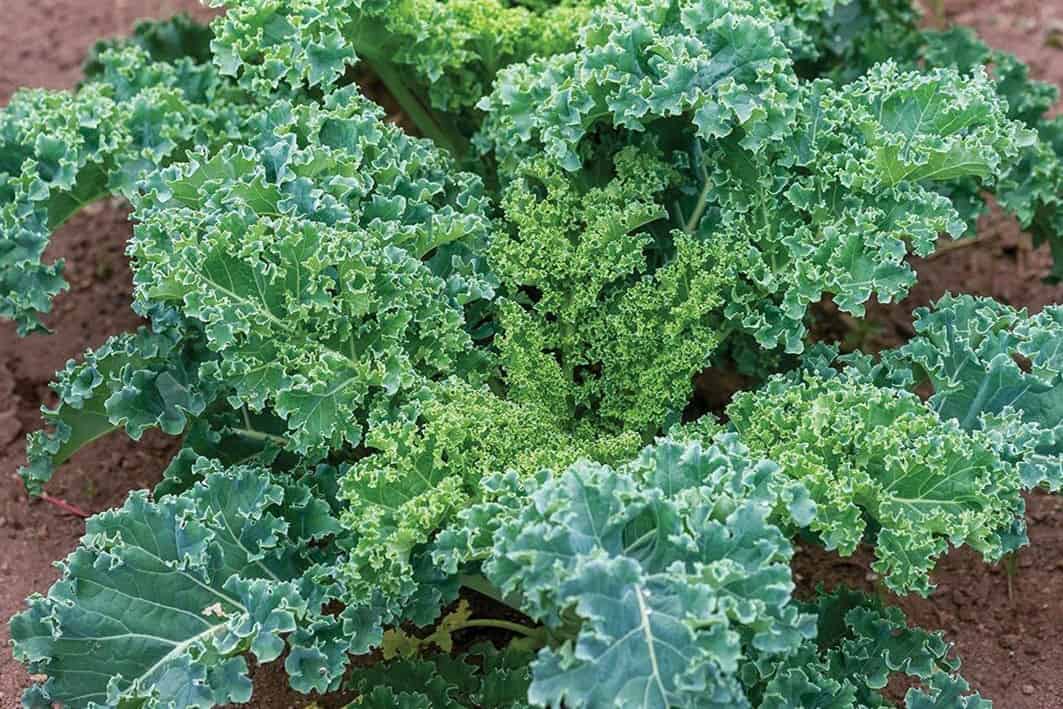
Kale is one of the best leafy greens you can feed your chickens. As shown in the table below, it is nutrient-dense but low in calories, making it a healthy addition to their diet.
1 Cup (21g) Kale Nutrition. Source: USDA
Nutrient | Value |
Water | 18.8 g |
Energy | 7 Calories |
protein | 0.6 g |
Carbohydrates | 0.9 g |
Fat | 0.3 g |
Calcium | 53.3 mg |
Phosphorous | 11.6 mg |
MagnesiumC | 6.93 mg |
Potassium | 73.1 mg |
Iron | 0.3 mg |
Selenium | 0.189 µg |
Folate | 13 µg |
Choline | 0.105 mg |
Vitamin C | 19.6 mg |
Vitamin A | 50 µg |
Vitamin K | 81.8 µg |
As you can see, kale is largely made up of water, which can aid with hydration. It’s also low in fat, sugar, and carbohydrates, so it won’t make your pets gain weight.
Furthermore, this delectable vegetable has the following nutritional benefits:
Rich in Anti-oxidants
Kale is high in antioxidants such as beta-carotene, flavonoids, and polyphenols. These antioxidants can potentially protect the heart, reduce inflammation, and aid in the growth of chicken tissues such as the skin and feathers.
Great Source of Vitamin C
If your chickens become ill, feeding them vitamin C-rich foods like kale will aid their recovery. Collagen synthesis, immune system function, and wound healing are all enhanced by vitamin C.
Lower Cholesterol
Kale includes a lot of bile acid sequestrants, which can help lower cholesterol levels in the body, reducing the risk of heart disease.

High in Vitamin K
In case of an injury, Vitamin K aids in blood clotting in your chickens. It also stimulates the proteins required to bind calcium.
Contains Many Useful Minerals
Kale is an excellent plant-based source of minerals, like:
- Calcium: supports cellular functions, bone health, and bone formation.
- Magnesium: protects the body from a variety of ailments.
- Potassium: decreases the risk of heart disease.
Good Amounts of Fiber
Since it’s high in fiber, kale helps regulate your chickens’ bowel movements and prevent them from having constipation.
Eye Support and Health
Kale helps reduce the risk of macular degeneration as chickens age. It’s also high in nutrients such as Vitamins C, E, Zinc, and beta-carotene that improve eye health.
What are the types of kale?
Kale comes in a variety of colors, ranging from green to red. A number has unique shapes and appearances. Regardless of these differences, kale is still one of the most nutritious vegetables for your chickens.
The following are some of the most popular kale varieties:
Red Russian Kale
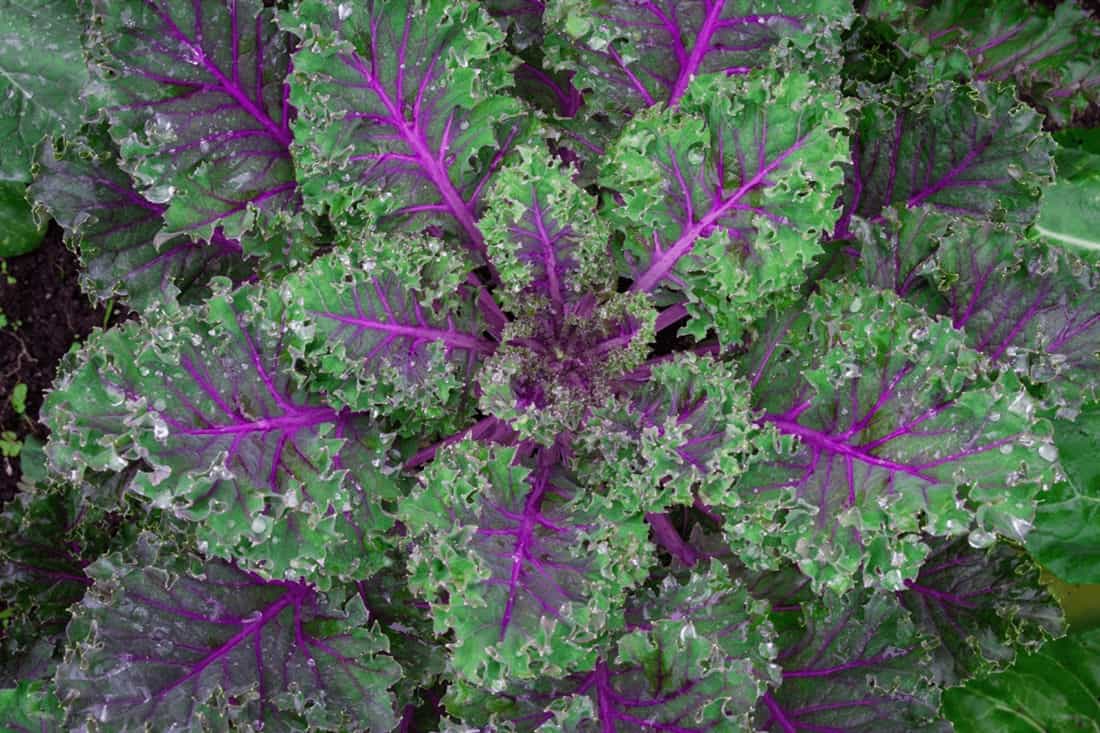
The Red Russian Kale, often known as “ragged jack kale,” has flat, reddish leaves with a little purplish hue near the stems. This kale is ideal for your chickens, despite its mild peppery flavor.
Before feeding them to your chickens, remove the stems since they are stiff, fibrous, and woody. You may also want to rub and soften the leaves with your hands. It can be eaten fresh or cooked.
Dinosaur Kale

Also known as “black kale” and “Tuscan kale, Dinosaur kale has long, bluish-green leaves that are somewhat wrinkled and shaped like a spear. It also has a solid texture that holds its shape even when cooked.
This variety has a slightly sweeter flavor than others, with a deep, earthy taste. All portions of the leaf are safe and edible for your chickens, either cooked or raw.
Curly Kale
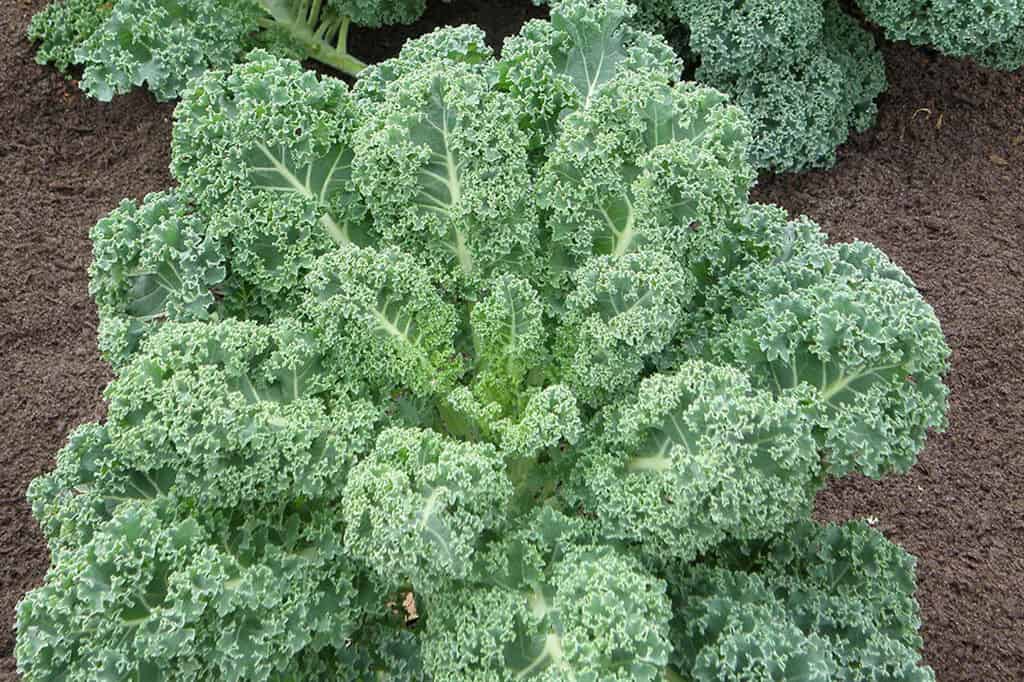
Curly kale is the most popular type of kale seen in grocery shops, backyard gardens, and salads. It is purple or green with a slightly wavy and curly appearance, hence the name.
The strong flavor of curly kale is characterized by a faint peppery bitterness. Regardless, the bitter, sour flavor will appeal to chickens. It is perfectly safe for them to eat cooked, raw, or boiled.
Redbor Kale

The Redbor Kale, as its name suggests, is a lovely red kale variety with wavy fringes at the end of its leaves that mimic cresting waves. Despite its crisp texture, it has a mildly cabbage-like flavor with a nutty undertone that your chickens will enjoy.
Baby Kale
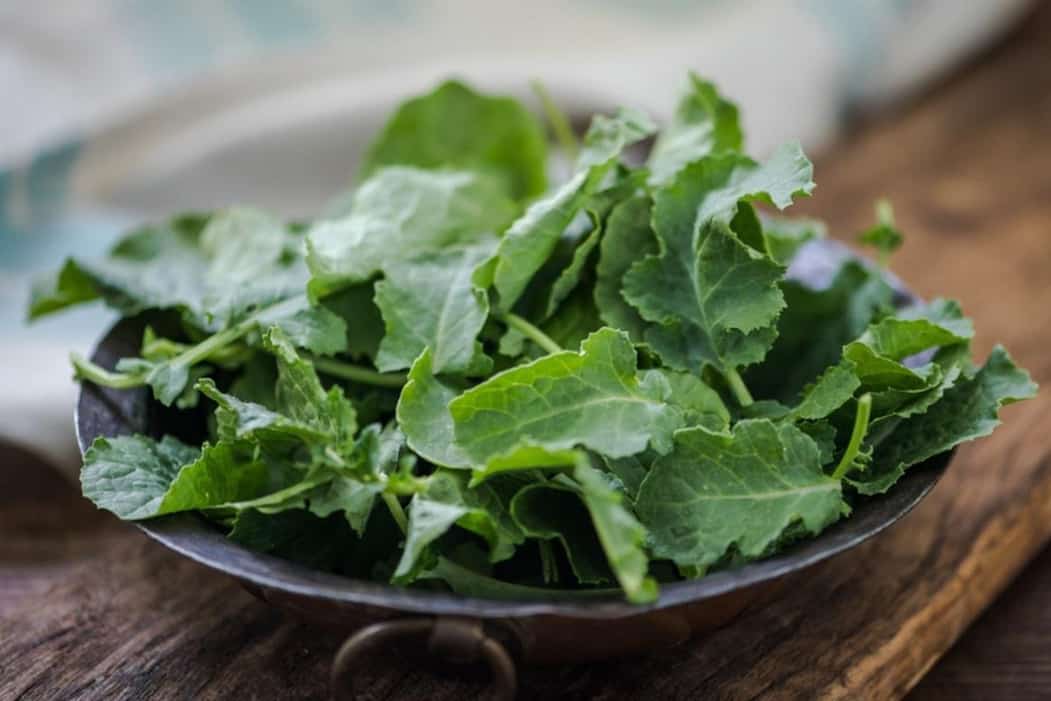
Baby kale is one of the most common types of kale frequently sold in supermarkets in pre-packaged boxes or bags alongside other greens. The leaves are smaller and have a more delicate feel. Because this variety is so tender, your chickens will love eating it raw or cooked.
How should you feed kale to chickens?
Kale is generally safe for chickens to eat. However, it may contain dirt and pesticides, so make sure you fully wash it first to remove any potential toxins.
Some pesticides can make your chickens sick, while others might cause serious health problems. Alternatively, you can grow your own kale to ensure that it is completely organic and safe.
The following are some ways to feed kale to chickens:
Fresh Kale
Raw kale is the most nutritious, although it can be difficult for chickens to eat, especially the stems. To help your pets eat them without straining, you can either cut the leafy greens into tiny pieces or crush them up in your hands
If you throw some kale to your chickens, they’ll enjoy picking it up off the clean ground and eating it till it’s gone. You may also hang a few kale leaves in the chicken coop or run for them to eat throughout the day. This not only keeps them content but also less bored when they are not free-ranging, especially during winter.
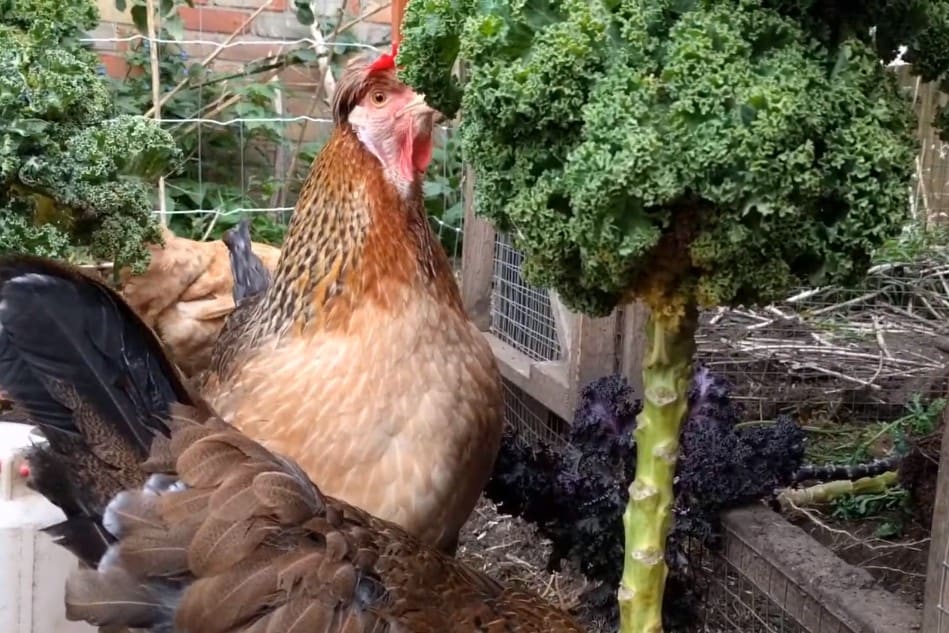
Cooked Kale
Cooking the kale beforehand is another way to feed chickens. They will lose some nutrients as a result, but it will make it easier for them to eat them.
For example, kale stems are tough, chewy, and fibrous. It’s best to cook the stems first to make them edible and safe for them to eat. They can be boiled or steamed.
Once it’s done, you may either feed the stems to the chickens whole or cut them into little pieces. In any case, it’s a tasty treat for them that won’t put them in danger of choking.
Mixing Kale with Feeds
To give the chickens’ diet an extra nutritional boost, you may mix it with raw kale. Cooked kale, however, will cause their feeds to become moist and mushy so avoid serving it this way.
Begin by chopping the kale into small pieces. Place them in their feeders once they’ve been sliced and properly mixed. After that, place it in their feeding bowl and let the chickens enjoy this nutritious meal.
How much and how often can chickens eat kale?

While kale is highly nutritious and contains no toxins, it should only be fed to chickens in moderation. Kale should only make up 10% of their regular diet. The remaining 90% should come from quality commercial feeds formulated with the proper amount of nutrition to meet the chickens’ dietary needs.
Kale is only meant to be eaten as a snack. For an adult chicken, a few pieces of kale are enough. As for newborn chickens, a tiny piece of kale will do. Despite being a good source of nourishment, it is low in energy and therefore is best given as a treat.
Even as a snack, kale should not be the only vegetable your chickens should be eating. These backyard pets like variety in their food so they should be fed a variety of other vegetables and fruits to ensure their optimal health.
But remember, never overfeed your chickens with kale, no matter how much they beg. If you feed them too much kale, they may not consume their food. If you continue to feed them kale every single day, they may develop nutrient deficiencies or overconsumption, both of which would be detrimental to their health.
Furthermore, before you introduce kale and other delights, make sure that your chickens are on a regular feed diet. You should never force your chickens to eat only veggies, fruits, or other snack items. In case you let your chicken out, you can use treats like kale to entice them back into their pen.
But how frequently should you offer kale to your chickens? Ideally, you should feed them kale 2-4 times per week only; don’t feed it more often than that. This will provide them with more nutritional variety and prevent them from becoming overly fond of it or rejecting it entirely.
Although kale is a superfood that benefits both people and chickens, too much of anything can cause health issues. This vegetable contains roughly 17 milligrams of calcium oxalate, which can cause kidney and bladder stones, as well as other health problems. Moderation is the key to your flock’s healthy, active lifestyle.
Summary
Can chickens eat kale? Yes, absolutely! Kale is a great treat to give to your chickens, as long as you don’t feed it to them exclusively. Despite the various nutritional benefits that this green leafy vegetable provides, chickens still require a consistent diet of chicken feed and diversified nutrition.

Joseph Hudson has been raising chickens for over 15 years. In 2018, he completed the Agriculture & Natural Resources program at Mt. San Antonio College. He currently raises over 1400 chickens on his 7.5-hectare farm. He keeps sharing his experience on raising healthy and happy chickens on Chicken Scratch The Foundry.







